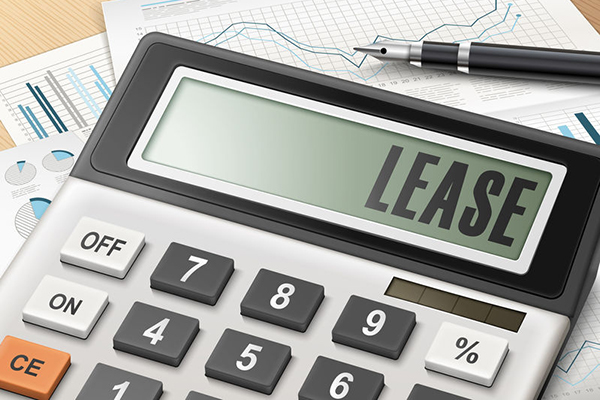Chapter 10 – Creative Financial Structuring In Leases And Their Underwriting
- On March 31, 2020

With so much data just at your fingertips, creative ways to do your financial structuring are now easily available. Ira Zlotowitz focuses today’s show on learning more about creative financial structuring in leases and their underwriting. She takes us across real-life scenarios from her life as well as other people that exhibit how we can create one for ourselves that best works out for our deals. As this is only possible if you have an understanding of your financials, Ira first gives us a look into how banks lend their money and where borrowers are concerned. She then further discusses credit tenant lease and the importance of understanding the why. Get behind the scenes of the lending world to learn more because once you do, your creative juices will come out, offering you perfect solutions for your deals.
—
Listen to the podcast here:
Chapter 10 – Creative Financial Structuring In Leases And Their Underwriting
Chapter ten is what we’re going to go with. If you took the whole real estate course, I appreciate that. I hope it was very valuable to you. That’s what you need to know. I want to talk a little bit on a personal experience myself. I came into this business in 1997. When I came into real estate, it was old school. Websites didn’t exist then. The real deal, all these data providers, everything was secretive. Email was just starting. No person over 40 had email. To put it into perspective, when they got their email, it was an address that their secretary had. They’ll call their secretary, “I got an email, can you please check it and print it out for me?” That’s how it was in the business world. Deals were sent in FedEx. I’m not dating myself, I’m ancient, last century. Real estate was about bricks and mortar back then. The terminology was how much per unit? How much per door? What is the multiplier of the income? “$200,000 income, six times multiplier? I’ll pay $1.2 million.” What’s the condition of the bricks? What’s the condition of the building? What’s the location like? That was paramount. The words cash-on-cash didn’t exist. The words IRR didn’t exist. What started to happen is the banks was starting to merge.
I remember then when interest rate was 6%. I was calling people who used to be paying 9% to be financed. Rates kept dropping. The start of the world, the beginning of what we see is a global economy, everything is digital in the financial, and everything is open and everyone sees everything. Those days, national lenders were starting to come. They were called CMBS, Commercial Mortgage-Backed Securities. They were all about financial engineering. The real turning point to me and why I said, “I’m going to be in this business. I love it,” I’m going to teach you some of those things that I got then, I’m going to teach it to you now. They opened up my eyes to a whole new world of financial engineering.
Creating Financial Structuring In Leases And Their Underwriting
Most of that financial engineering you’re all experiencing in being in real estate, you’re seeing the terminology is being used, using the Eastern Union App to get your calculations of the IRR, cash-on-cash, and the waterfall. If you take out a second mortgage, if you’re doing a full refi, you’re cashing out. All these things are the terminologies you already come comfortable with. What was the real turning point? I want to focus on creative financial structuring and leases and their underwriting. As a simple way, it will start the creativity, it was very simple. There were two types of lenders. There was a bank and a bank would lend their money out, let’s say 4% interest rate. That was how the bank lends money. Behind the scenes, what started this whole thing is that the life insurance companies. Every insurance that you buy, it’s maybe if the insurance companies have to pay off. You could buy health insurance. You might be healthy, but after you make a payment, they told you that you’re a cancer premium.
You buy car insurance, you may never get into an accident, but life insurance, they’re going to have to pay it. Everybody will die, and because of that, they have to be extra secure to make sure that when someone dies, they have the money to pay the family. They’re very safe. What do they do with that money? They’ll invest in the safest piece of anything. They wouldn’t lend on real estate, but they wouldn’t want to do $2 million deals. They would want to do $50 million deals. They don’t also only want to do the nicest buildings in the markets, but they also want to do deals, not 75%, 80%, 90% leverage but 65%, 60% or 55% leverage. If the rate is 4%, they could go down to 3.5%. They go now to 3.25%, they’ll be cheaper. The problem they have is how many people own the nicest building in the neighborhood.
By virtue, the rest of the other buildings in the neighborhood are not as nice. Only in good neighborhoods. That means the other neighborhood are not good. Only larger deals and there are smaller deals. Putting all these pieces together, they don’t have enough volume to put out. On the flip side of the coin, the smartest real estate people, short of buying, are those that are doing the preferred equity. The highest risk part, bridge loans. The highest risk is part of deals were the riskiest loans. They would charge 8%, 9%, 10%, or 12% on their money. They would do short-term loans, they put out money but they’d also have to have a limited product. How many people need 10% money? If they do, how long would they need it for? Those are two ends of the spectrum.
The smartest real estate people short of buying are those that are doing the preferred equity. Click To TweetA bank is lending all day long, 75% leverage at 4%. Along came Wall Street, CMBS, Commercial Mortgage-Backed Securities and said, “What would happen if I took that same deal? I bring in a life company and a fund as a partner. Together they’ll make a loan.” This is the simplistic way I’m explaining it, but it’s not the reality of how it went. In this in a simple way, let them do a loan together. The borrower will take one loan and behind the scenes as partners or something like APs, BPs. Instead of the partner is coming together even, the life company will have the safest part of the loan. The fund will put the money at the riskiest part and together they go ahead and make that loan.
How did that work? That worked by going out and taking an $800,000 loan. Instead of $750,000 loan, they went to $800,000 because the fund has no problem owning the property. He doesn’t mind going up to 80%, 85%, 90% sometimes. To able to work over to the fund, the Wall Street said to the fund, “We have a problem putting out loans.” Would you rather make a smaller return? The truth is sometimes anyway put out money at 8%, 9% or 7%. Are you willing to only put out money a little over 8%? They’ll then make 10% to 12%, but it will be on a beautiful apartment building. It will only go up to 80%. It will go with someone that’s in perfect health, credit, everything is fine. On the flip side of the coin, they went to a life company and said, “Let me ask you a question. You’ll get money at 2.5%. I’ll give you 3%. If I’m going to go ahead and give you 3%, I’ll give you an apartment building with same leverage, 65% leverage of a building. The only difference is that you’ll even get a little bit more protection.”
Instead of lending to someone that might exist a problem and have an issue, they’ll be behind you, a partner in this loan. That’ll be a fund that’s very wealthy, but they don’t want to get wiped out. They never take losses, and they have the ability, if there’s a problem, instead of getting wiped out, they’ll cover you. Meaning if there’s a problem on this loan, they will come in and they’ll become the borrower. They’ll get rid of the borrower and instead of having this guy Joe as your borrower, this fund will become the borrower. You’ll be in a much safer situation. The beauty here is you can stop putting a lot more money. You may have been lending at 2.5% sometimes and some of these life companies were lending in the current markets they’re talking because they’re taking no risk. They have the money anyway. It’s money they have to pay up for life insurance. They need to get some return so it’s not earning nothing and they say, “I promise you 3%.”
What happens then is it isn’t a $1 million building. $650,000 is the life company comes into 3%, $150,000 is the fund. Together, it’s an $800,000 loan and blended rate is 4%. Do you know what this does? What this does is it allows the Wall Street lender to hang up a sign and say, “World, you want regular bank financing 4%, but instead of 75% leverage, I’ll give you 80%.” That’s how they started lending money. What we all see here was a break off of this whole discussion. Over time, they kept stretching and they’re willing to go to 85% and a rate was only 4.25%. The reason why it was 4.5% is because that’s how the blend worked out. If you use the Eastern Union App, we have a calculator and then calculate the blended rates. I want to tell you where the difference is.
When most borrowers didn’t understand the behind the scenes, they would compare, “I can get 80% money at 4%? That sounds like a good deal.” When I would sometimes call up that owner, I say, “Do you realize that behind the scenes what you’re doing is getting $650,000 at 3%? If you are willing to only take $650,000, you don’t need the money, you could borrow money at 3%.” “Is this real, I’d rather do that.” When people started realizing the behind the scenes, that’s when their creativity started to flow. It was starting but it becomes apparent to all of you. Every loan that’s happening behind the scenes, there are different people giving money. As long as you start understanding each person and why, that’s when you can play with the app. That’s what makes it so powerful.

Creative Financial Structuring: When people started realizing the behind the scenes, that’s when their creativity starts to flow.
Sometimes, you can do with a deal, when in the surface it seems like a bad deal, why would you pay this rate for 80% money or only take so little money? You have to raise more equity. Remember, a deal is not about 70% or 80%, it’s about 100% in the capital stack. What the E-calc does is to calculate the full 100% of the capital stack. At the end of the day, everyone agrees. Would you rather overpay based on other mortgage rates from 4% to 4.25% and go from a $750,000 loan on $1 million purchase if you get an $850,000 loan? On that $100,000 difference, you’re getting equity saving instead of paying. Don’t forget, you’re saving on that. You would’ve paid the equity at 12%, 14% IRR returns and splits. This is where you want to put the home type package together.
Here’s a blended rate to go into it, open up your mind, it’s behind the scenes. If you keep going back to the root, you can come ahead and become more creative. I’m giving three real examples and I’m putting them together. The second was on the lease. When lenders became national lenders and the growth of technology allowed stores an easier path to start expanding and there are credit tenants and all different sophistications. CVS, for example, at that time as credit tenants. CVS, Walgreens, they would sign leases at a certain price. What happened is a person would go ahead and buy a deal and financial engineering, know the financing he can get done. If you’d buy a building for $4 million and he’d get a loan for 3%, he knows he’s putting up $1 million by 3%. He takes a $3 million loan.
What happens in a scenario where we were able to sign the right lease with a CVS or a long-term lease? Based on the cashflow, lenders would lend them $3.6 million because they don’t care about the value. It’s called a credit tenant lease. In a case like that, I’m going to use an example. Somebody used to go on a pharmacy who would pay $25 per square foot. They sign a twenty-year lease. The interest rate at this time is 4.25%. That service the bank required is 1.05%. The actual rentable square feet on the building is 10,000 square feet. The NOI works out to $250,000 and the loan amount for a deal like this could be $3.2 million. That service is $20,000 to $38,000, cashflow to that service is $11,905 and everything is great. On a deal like this all day long, people are buying these deals for $4 million, financing 3.2% and that’s how deals were trading. What happened was in the negotiation between the landlord and the tenants, CVS realized that banks were lending the borrower more money or the borrower realize either one.
In order to get a competitive advantage because they have good credit, they turned around and said, “I’m willing to give the same terms, same $25 a foot, but I’ll give you a 25-year lease.” The borrower called me up and said, “Ira, how much can I borrow?” In the same scenario, it was 25 years, allow that the payments were divided over 25 years versus over 20 because when there’s a credit tenant, the bank lends money to match the lease term. There’s never risk. I believe CVS will be in business for twenty years, twenty-year amortization. Now that they’ve got an extra five years of amortization, there’s more cashflow each year. Therefore, they can afford a higher loan amount. They can afford $3.6 million. I had someone now who would go out there and he started winning every bid. Everyone would buy these sites for $4 million. He started paying 4.2%. People thought he was crazy. He goes, “I don’t care what you think.
The bottom line is I’m going to get a lease in place. The banks lend me $3.6 million. I’m in a better place than I was before. I don’t mind overpaying for $4.2 million. I don’t call it overpaying. I’m buying a 25-year coupon.” What happened is that CVS sometimes got smarter and says, “That’s too good. We’ve got to split this difference. Do me a favor, if you want to maintain the same numbers $3.2 million, only charge me $21.87.” They could’ve gone back and forth and they end up negotiating somewhere in the middle. It’s the creativity of understanding how the financing was based on the strength of the tenant sometimes when it comes to a credit tenant.
Credit Tenant Lease
Based on the lease, that leasing structure can go ahead and make all that difference in how the deal worked out. For me, this is a big eye-opener. The structuring of the lease, the length of the lease if it’s a credit tenant makes a difference. Sometimes I meet somebody who says, “I could get this new store coming into my location. They’re going to pay me $30 a foot.” If a bank is going to treat them as a new store that they may go out of business. Because of that, in the same scenario, instead of lending you $3.2 million, they lend you $2.8 million. I’d rather take a lower rent and borrow $3.2 million. These are discussions, if you understand that, its financial engineering.
Asking The Why And Understanding Every Number
Before, it was like a foreign concept but now, everyone appreciates the concept, “I didn’t realize this.” They apply it. These are the parts that if you’re buying real estate, you want to say, “You can make more money from financial engineering. This is that next level with the leases.” The next one puts all this together and we were once given the assignment to go ahead and do a loan and go with an example. The person came in and wanted to borrow $3.2 million, $32 million, $33 million and we were computing. At the end of the day, after all the computation was said and done, the other broker offered a loan of $31,400,000 and change. We offered a loan $32,700,000.
An existing tenant is cheaper, they typically roll over. Click To TweetWe offered the borrower over $1 million more on the same building. I remember until now, the other brokers calling at the bar saying, “They must be lying to you. It’s not possible. I will always be a trusted advisor.” We went on this. The other broker showed us underwriting. “It’s not possible. You can’t work for that.” He was right, but he made one mistake. Here’s one of the mistakes. When you underwrote the building, the building had a net cashflow of $2,252,000. Because of that net cashflow, it was only able to support a loan of around $31,450,000. That was a good support. That broker was right. He’s accurate. That’s what was happening. We were able to get a loan of more money. That’s the way they did the other loan. They did a $31,450,000 where they hold back for reserves of $20,000 so they funded $31,429,000. We were able to loan a $32,945,000 with a much bigger hold back at $234,000. Our net proceeds with $32,700,000. How did we do that? What was the creativity overhead that made it work?
The creativity overhead that made it work is as follows. It’s because we asked the why to understand every number. The bank originally, just like the other broker guy, wanted to hold back a reserve every year of $242,659. This reserve they wanted to hold back was to cover the three very important pieces of a lease. Within a lease, there’s leasing commission, tenant improvement, and there are renewals. In a leasing commission, if your broker find your tenants, even though they sign a new lease tomorrow morning, nice and dandy, “I’m all happy at ten-year lease.” It could’ve been to Walgreens, CVS, or any other store or any of the tenants, you pay a commission. That can be an expensive commission. That could be 4% or 5% for the life of a lease. It’s like selling the building to a tenant, selling a building for a certain number of years. There are tenant improvements. You want this tenant to pay market rent. You can’t deliver a dump. You have to fix up the unit, the stores and the office. You put all these things together, that’s an expense.
There’s also a probability of renewal. When the bank projects in the future, you have leases coming due in three years. What’s the chance you’re going to renew the tenant? What’s the chance of tenants going to stay? If you take a new tenant, it costs more money. An existing tenant is cheaper, they typically roll over. You also have to check-in and go on for a side point. What I’m talking about here is if a tenant signed a lease and you buy a building counting on a certain amount of rent increases, you have to also realize that if the tenant was giving you reimbursements, those reimbursements reset on a new lease.

Creative Financial Structuring: Within a lease is leasing commission, tenant improvement, and there’s renewals.
These are expenses that go in. We have it here on the page that said, “Show me how you got up to the number.” There’s a formula which takes them into account the lifespan of the lease of the loan. If there’s a ten-year loan, the bank says, “Let me figure it out over the next eleven years.” It’s tenant-by-tenant. If this tenant is on a five-year lease, in five years, it’s coming due. How much am I going to need for tenant improvement leasing commissions? They put a dollar amount there based on a probability. Is that the same tenant or are they going to leave? If it’s the same, I have to put away this amount of money. If they’re going to leave, I’ll put this amount of money. They probably are going to sign another five-year lease. They have to deal with them again in year number ten. However, I have another tenant. That space is renewing in three years from now, so I have to deal with them in three years. I have to deal with them in five years.
Sometimes they’re going to deal only once. Someone has a lease at a certain point, they are seven-year lease. Different terminology they go through a lease-by-lease, the base is spreadsheet which I have here. It’s not that you can’t have twenty variations. It’s cookie-cutter once you fill in this current rent roll, but it gives you an idea of how much you can need each year. The bank takes the ten years. They want to take a total of eleven years divided by eleven and the number they come up with is $135,000. I don’t understand. If the number you need is $135,000, how come you make me put away $240,000? I went under the hood and looked at lease-by-lease. Here’s the problem. Say a year from now, you need about $450,000 potentially because of a bigger tenant that’s coming due. You have to deal with it then. Even though over the life, your average is $135,000 is fine. Every year, you need $32,000. You have units that are not rented. You have to hold $20,000 reserve any moment, that reserve. If you can only put away $135,000, $135,000 plus $135,000 equals $270,000. You’re going to be short a few hundred thousand dollars. Therefore, what we want you to do instead is let’s take what we need in the first two years divided in two.
By dividing it in two, that’s the $242,000. You need $242,000. At $242,000, everything is fine. You could count to say what will you do if you have 3 or 4? We’ll figure out the most we ever once need a reserve and we’ll stop collecting at that point. If you sign a lease and you don’t need all the money, I’ll give you back the money. No problem. What I realized from that is, “The bank doesn’t need me to put away more than $135,000 but they have to deal with this one issue.” I said, “I have a better idea. Why can’t you take the $135,000?” They will be sending me short $234,000. We want to make sure you have it. No problem. Underwrite the deal, you lend me $32,945,000 but don’t fund me that amount of money. Hold back and reserve the $234,000, so this way $234,000 you have holding and closing. Year one, you have $135,000. Year two, you have $135,000, combine together, you have all the money you need. Everything is great. Check the bank by asking the why and understanding and the relation you had to the bank that they’re willing to listen to the story. It was a great story. The bank got what they needed, the building appraised for enough money to support this loan.
That wasn’t the problem. It was only a debt service issue. That debt service coverage ratio was an issue. Since you had extra cashflow because of this, I have $2,359,000 to be exact as my net cashflow versus $2,252,000 that extra cashflow, it can be much higher proceeds. Because of those proceeds, even net of the hold back at closing, I funded the borrower $32,710,000. The net proceeds of the other broker had $32,429,000. Everything else was the same. That’s how he got it done. When I started seeing that, this you’ve got to understand, this was an eye-opener. I said, “This is something I love.” It’s creative solutions. It’s understanding the why. It’s not a dictatorship. This is just the way it is. Understand why the bank needs it. Understand under the hood who they’re selling to and why. Understand from the borrower’s side what kinds of leases you’re signing. Understand from the buyer on a purchase, where he is getting his money from.
It might be cheaper net for him to overpay on the mortgage and take different equity than the other way around. If he takes less equity, he may only have to give away less than a deal. No, it doesn’t make a difference. Therefore, he’d rather not about the amount of equity. He cares about the interest rate and putting this all together. I like to thank you for participating in season one. If there are any questions or comments at any time, you can reach out to me. I respond to my emails, to my phone. If you want to call, call me. My email address is at [email protected]. My cell phone is (917) 597-2197. I prefer text, WhatsApp, email versus voice. Anything related to the Ira Group, feel free to call Aaron Eller, [email protected] or (845) 304-3236. Thank you so much.




0 Comments